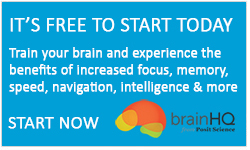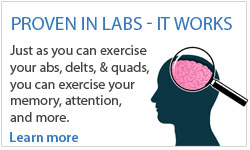Psychiatrist Dr. Norman Doidge recalls the first time he examined a human brain. It was 1979, during a neuroanatomy course at the University of Toronto’s medical school.
On rows of tables sat about 100 brains in dissection trays. Doidge and his lab partner were assigned one to slice open.
“Like most medical students, my first exposure to a brain, in a material way, involved holding a dead brain, which was preserved by all sorts of chemicals that made it rather stiff. There was a lack of pliability and all of the cortices, with their folds and peaks and valleys, looked identical.”
The thinking about the adult brain at the time echoed the physical state of this inanimate, three-pound organ from a cadaver. It was thought to be static, fixed and incapable of fundamental change. It was hard-wired so that what you had in your mid-20s was what you had for life — depressing news for anyone who suffered a brain injury or who wanted to stave off age-related cognitive decline.
But our understanding of the body’s most mysterious organ has changed. In recent years, experts have learned that the adult brain can actually rewire itself — changing its physical structure and function through experience, thought and behavior. It’s a property known as neuroplasticity.
The revolutionary discovery is “the most important change in our understanding of the brain in four centuries,” says Doidge, who wrote the 2007 bestseller The Brain that Changes Itself and who is now writing a follow-up book. “Scans show that the neural networks in your brain change when you think differently, perceive differently, imagine things and become aware of things.”
“While there have been brief flashes of insight into this ability over the centuries, they have been dismissed because they weren’t in keeping with the mainstream belief that the brain was like a machine with parts, each performing a single function in a single location,” Doidge says
What all this means, explains Doidge, is that we have been woefully underestimating the brain. Something other than age can change its anatomy. This is good news in the face of studies that show that many cognitive abilities peak in our mid-20s.
While we have always known the structure of our brain drives our behavior, plasticity shows the opposite is also true. The architecture of our brains is constantly changing in response to the lives we lead. New neural networks can be developed, regions of the brain can grow and change function, taking on the tasks of damaged areas. The brain can, in a few locations, create new neurons.
This sea change in thinking has enormous implications. The powers of neuroplasticity can be exploited through rehabilitation, psychotherapy, brain fitness exercises and even meditation.
This gives researchers new hope for treating people with brain injuries, learning disabilities and mental health problems.
The news is also good for healthy adults: Studies show their brains can be changed to make them more compassionate. It can even make them happier.
Research by Dr. Timothy Salthouse at the University of Virginia shows that by about age 22 our ability to make rapid comparisons, remember unrelated information and detect relationships are at their maximum. Speed of thought and spatial visualization also peak around this age. Reasoning peaks a little later, at about age 28, and then typically declines, as do the other skills.
Doidge describes the late 20s and 30s as the beginning of a “less tempestuous” time of life for the brain. It extends into middle age when skills we have already mastered are replayed and replayed.
“Many people have the same hobbies, the same job or profession, the same family members, the same spouse and they live in the same city. Their lives frequently become extremely routinized.” Formal education has typically been completed.
What happens to our brains is that the part that reinforces connections — the nucleus basalis — begins to atrophy.
“It’s a use-it-or-lose-it brain on many scores,” Doidge says.
You might occasionally forget things, like where you put the car keys or the name of someone you recognize.
But it’s not all downhill from there, as was once thought.
While your brain might not be as plastic as it once was, it’s still capable of incredible change. Matthew Linton is proof of that.
Linton was enjoying a weekend at a Collingwood cottage in May last year when he fell from a deck, striking his head on a concrete slab.
The 30-year-old from Toronto was unconscious when found by friends but eventually came to. Linton assured them he was fine and just needed a nap. When they checked on him a few hours later, they couldn’t rouse him. He was in a coma.
Linton was rushed to the local hospital where a CT scan showed he had suffered severe brain damage — bleeding between the dura that covers the brain and the brain itself. Because of the mounting pressure on the brain, doctors told Linton’s friends he likely wouldn’t survive.
A helicopter flew him to Toronto’s St. Michael’s Hospital where surgeons had doubts about operating, since more than five hours had elapsed since the fall. They told his wife he was functionally brain dead.
But surgery was performed and Linton surprised medical staff when he started coming out of the coma just days later. Still, he had suffered permanent damage to the left occipital lobe and left lateral temporal lobe of his brain.
When he was transferred to the Toronto Rehabilitation Institute two weeks later, he was in a wheelchair, his left side paralyzed. His thinking was foggy and his short-term memory was impaired. He’d forget conservations seconds after they were over.
At Toronto Rehab, Linton worked with Robin Green, head of the cognitive neurorehabilitation sciences lab and a Canada research chair in traumatic brain injury. She is investigating the impact of intensive rehabilitation on the neuroplasticity of people who are brain injured.
Linton was given double the normal amount of cognitive, physical and occupational rehab — up to six hours a day instead of three. The regimen included extra memory, sustained attention and visual scanning exercises and high-level balancing and muscle-strengthening training.
Today, Linton can walk, his thinking is clear, he can speak properly and his ability to read continues to improve. The graduate of Upper Canada College and the University of Western Ontario has returned, part-time, to his job as a management consultant. He plans to resume long-distance running; so far he can run 15 minutes straight.
“Things have gotten better than anyone has ever expected,” says Linton.
Because of scarring in the area of his brain that processes vision, he has blind spots in both eyes, making it difficult to take in and store visual information. He is becoming better at learning through listening.
“The part of my brain that works on memory has changed streams, so what I used to rely on (vision), can’t be relied on at all. So now it’s shifting to rely on a completely different input (audio) and it’s getting quite a bit better,” he says.
Linton’s “exceptional” recovery has been helped by his motivation, innate intelligence and social interaction, Green notes, adding that his improvement is consistent with the preliminary findings of others that intense rehab improves outcome.
Doidge cautions that our brains are not infinitely plastic. There are still people with brain limitations who have not improved despite doing neuroplasticity exercises.
“While we have seen a number of new kinds of cures, there has to be some healthy tissue within reach of the damaged area for neuroplasticity to work,” Doidge says. Other requirements include an ability to pay attention, intact motivational brain centres and properly designed interventions.
Nevertheless, if studies like Green’s and others continue to produce such good results, “intensified therapy” could become de rigueur in rehabilitation.
To help explain how brains like Linton’s change with extra stimulation, Green cites a study done on taxi drivers in London, England. Scans showed that the part of their brains that deals with spatial navigation was bigger than for non-cab drivers. What’s more, this part of their brains grew even more the longer they were on the job. Memorizing routes and maps actually made their brains bigger.
Showing a reporter some of the tools of his trade, Doidge dons what look like a cool pair of mirrored, wraparound sunglasses. But these are no normal specs. The sides of the lenses can be raised to admit more light to either of his visual fields. When the side of one lens is raised, the opposite brain hemisphere is stimulated. The glasses can be used to help people with attention difficulties, stress and anxiety.
Another tool, sitting on a tripod in the corner of Doidge’s office, is a special light bar used to treat patients with post-traumatic stress disorder. While recalling a traumatic event, a patient tracks a light as it quickly darts back and forth on the bar. The bilateral stimulation of the brain allows the more sequential processors of the left hemisphere to process the disturbing memory that has been stuck in the emotional right hemisphere.
These tools, plus psychoanalytic psychotherapy and cognitive behavioral therapy, can help change the way the brain works, drawing on the plasticity principle that “neurons that fire together wire together,” Doidge explains. The changes can be more enduring than medication such as anti-depressants.
“Psychotherapy works by rewiring the brain. Every time you become aware of something new in a psychotherapeutic session, you activate an existing rigid neural network, you make it more malleable and you can alter it with the help of awareness,” Doidge says.
In psychotherapy, clients are guided be more aware of thoughts, challenge them and ultimately change their brains at a cellular level.
Ironically, plasticity can lead to flexible behaviors and positive change, as well as to rigid behaviors and habits, both good and bad. Doidge calls this the “plastic paradox” and offers the metaphor of fresh-fallen snow on a ski hill. On your first pass down the hill, you create a new path in the pliable or plastic snow. If it was a good run, you’ll likely stick close to that path on subsequent passes down the hill. But well-worn tracks can eventually become ruts in which you can get stuck, he explains, likening these ruts to the rigid, destructive behaviors patients want to change.
In therapy, patients are, among other things, guided to set up road blocks on those tracks and to discover new pathways through the snow. Sometimes that roadblock can be as simple as learning to recognize and inhibit what had been an unconscious response.
Neuroplasticity can help address obsessive compulsive disorder, schizophrenia, bipolar disorder, stroke and even aspects of multiple sclerosis and Parkinson’s.
And it can help people with obvious brain impairments.
“The fact is . . . we are all on a continuum and all of us have these areas that are not functioning okay and others that are functioning okay,” Doidge says. “Anyone can benefit because neuroplasticity is the modus operandi of the brain. It’s the way it works.”
That means you can change if you’re bad with directions, remembering faces and names or if you’re a slow reader. You can even train your brain to improve your balance on high heels.
Five years ago, Annette Goodman, now 39, decided to tackle something that had long bothered her — an inability to think quickly on her feet.
Goodman had a minor learning dysfunction that meant she struggled to grasp the relationship between two or more ideas or concepts.
“If I was involved in a debate, socially or in a work situation, I’d often freeze up and wouldn’t be able to come up with a counter-argument fast enough,” she explains. “I’d come up with one later but it would be too late and the conversation would be over.”
Goodman took computer-based cognitive exercises developed by Toronto’s Arrowsmith School. She had previously enrolled her two sons in Arrowsmith for learning disabilities. She subsequently was hired as its chief education officer.
“We all have deficits to some extent. No one is good at everything,” she says.
Doidge is a fan of Arrowsmith and devotes a chapter of his book to it. Though neuroplasticity wasn’t part of the lexicon when the school opened 30 years ago, its program is based on rewiring the brain through repetitive cognitive exercises.
Arrowsmith operates as a private school in Toronto, teaching students from Grades 1 through 12 at a cost of $22,000 annually. Arrowsmith has branches across North America, with a total enrolment of about 800.
Goodman spent about 90 minutes a day for six months doing repetitive, computer-based exercises designed to address her weakness with symbol relations.
One exercise involved reading a 10-handed clock, with hands not only for hours, minutes and seconds, but also for days, months and years. The program challenges students to read the clock faster and faster.
Arrowsmith is not alone. Research into neuroplasticity and digital technology has spawned a brain fitness industry, with software aimed at improving memory, increasing processing speed and focusing attention. “Brain gyms” are popping up in the United States.
San Francisco-based Posit Science is a leader in the field. While its programs are marketed mainly to the 50-plus crowd, CEO Steven Aldrich says they can benefit anyone. As knowledge about the power of our brain’s plasticity spreads, he expects demand for brain fitness products to grow among younger age groups.
“I harken back to the 1970s and the physical fitness revolution . . . . I think we are going to see the same kind of revolution with brain fitness as folks realize their brains are critical to their quality of life and that they can take charge of how they work.”
Like mental training, meditation can also change the brain. In her book Train Your Mind, Change Your Brain, Newsweek science writer Sharon Begley cites studies of Buddhist monks who have tens of thousands of hours of mediation behind them. They have significantly enhanced their left prefrontal cortices, the part of their brains that generates feelings of empathy and love.
“Research shows that with a certain kind of mental training you can boost your happiness set-point,” she says.
Remarkably, the same plasticity concept that is helping Linton recover from his brain injury is making monks happier.
“We are really at the beginning of exploring this,” Doidge says. “We just don’t know how far this neuroplasticity revolution is going to take us.”
Brain changes
Examples of people who have literally changed their brains as adults:
 A woman born with half a brain is still able to function in life because her right hemisphere has taken over functions of the non-existent left hemisphere.
A woman born with half a brain is still able to function in life because her right hemisphere has taken over functions of the non-existent left hemisphere. Another woman always felt like she was falling because her inner ear’s vestibular system was damaged as a result of a side effect of medication. Her brain rewired itself, learning to take its balancing signals from electrodes placed on her tongue. She has completely recovered.
Another woman always felt like she was falling because her inner ear’s vestibular system was damaged as a result of a side effect of medication. Her brain rewired itself, learning to take its balancing signals from electrodes placed on her tongue. She has completely recovered. A man suffered a stroke, causing paralysis to the left side of his body. But with intensely practiced exercises, healthy parts of his brain reorganized themselves around the damaged parts and took over the lost functions, allowing him to regain use of his disabled limbs.
A man suffered a stroke, causing paralysis to the left side of his body. But with intensely practiced exercises, healthy parts of his brain reorganized themselves around the damaged parts and took over the lost functions, allowing him to regain use of his disabled limbs.
From the book, The Brain that Changes Itself, by Dr. Norman Doidge






 English
English
 Français
Français


